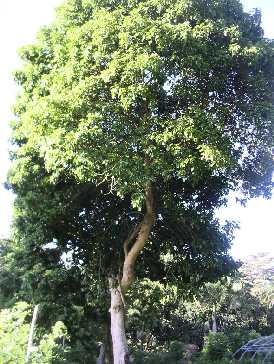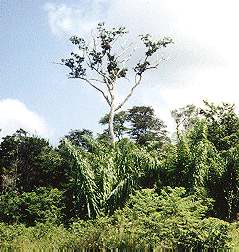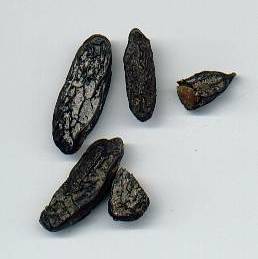
|
| Tonka tree |

|
| Tonka tree |
Tonka beans make for a surprising, unusual alternative to vanilla in home-made ice cream, custard and soufflé. Typically, a few beans suffice to flavour one kg of these desserts. There are only few spicy recipes that make use of tonka beans, but Italian-style tomato sauce with tonka beans is truly great.
It is to be expected that tonka’s sweet, heavy aroma fits best to other sweet spices, like vanilla, cinnamon or saffron. Yet I do not know of any recipe that makes use of such a combination.
Around the turn of the millennium, tonka beans enjoyed a sudden surge in popularity in much of Western Europe, particularly in Germany. They are now well-established in gastronomy as a flavouring for liquid or semisolid dessert (usually such that have been prepared with vanilla before the tonka fashion started). One can see some irony in that, because at the same time, tonka-adulterated vanilla extracts of Mexican origin continue to plague consumers in the USA (in Europa, vanilla is cheaper than tonka). Another ironical twist is that at about the same time, the comparatively low coumarin content of cassia became a regular issue of public concern, making headlines every year shortly before Christmas.
At last, there is a non-culinary usage of tonka beans to mention: In the past,
tonka beans were often used to flavour tobacco for smoking pipes. In our days,
pipes have largely fallen into disfavour and become substituted by
cigarettes (which are also on decline in many Western countries);
tonka-flavoured tobaccos have, thus, become a rarity.
Spices can also be used to flavour cigarettes, but I have never seen tonka
being used for this purpose; instead, vanilla and
peppermint enjoy modest popularity in Europe,
whereas clove-flavoured cigarettes
(kretek) are enthusiastically smoked in Indonesia.






